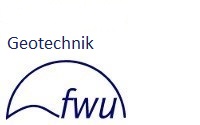Risk detection of soil subsidence due to microbial degradation of organic matter
In cooperation with the Institute for Applied Microbiology at the Justus Liebig University in Giessen and the Department of Rock and Soil Mechanics at RWE Power AG, investigations were carried out to identify the risk of ground subsidence in opencast lignite mining.
Lowering on the ground water table causes ground subsidence in areas around lignite mines through physical and biological processes. Although groundwater has been lowered for more than 50 years in some cases, long-term subsidence still occurs, especially in floodplain areas. Soil profiles from different locations with different soil types and layer depths were analysed to understand the mechanisms of subsidence and to identify parameters that allow estimations of future and possibly past subsidence. Oxygen concentration was identified as an important parameter for soil decomposition and for the associated subsidence. Comparisons of oxygen, nitrate, ammonium and iron(II) concentrations at different soil depths showed high concentrations of nitrate and low concentrations of iron(II) and ammonium under oxic conditions. In contrast, low concentrations of nitrate and high concentrations of iron(II) and ammonium were found under anoxic conditions. Therefore, measurements of iron(II), nitrates and ammonium are suitable indicators for estimating the degradation of organic components in soil layers affected by the foundation stresses. An assessment of whether degradation has already taken place or whether microbially available substance is still available which may cause subsidence could be made in future on the basis of the parameters biomass and respiration rates.
The research work was published under:
Ratering, S.; Wilden, U.; Neumann, M.; Nolte, N.; Herrmann, R. A.; Bublitz, O.; Löwen, M.; Schnell, S. (2020): Risikoerkennung von Bodensenkungen infolge mikrobiellen Abbaus organischer Substanzen. GeoResources Zeitschrift (3-2020), S. 17–30. Online: https://www.georesources.net/download/GeoResources-Zeitschrift-3-2020.pdf
